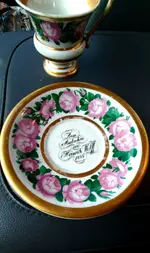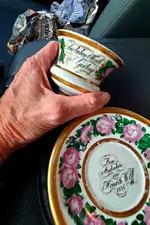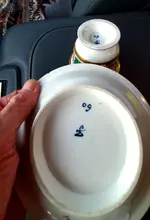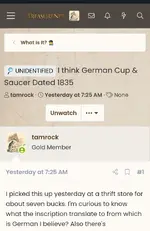tamrock
Platinum Member
I picked this up yesterday at a thrift store for about seven bucks. I'm curious to know what the inscription translate to from which is German I believe? Also there's unidentified to me mark on the bottom and I don't know if I photo'd it in the correct position or not? I wonder also if it is really as old as 1835? It's a typical sized cup and saucer, I don't have anything to measure it with, because I'm gonna be behind the wheel a lot for the couple of days.








